Building a versatile summer dresses wardrobe is the key to feeling confident and stylish all…
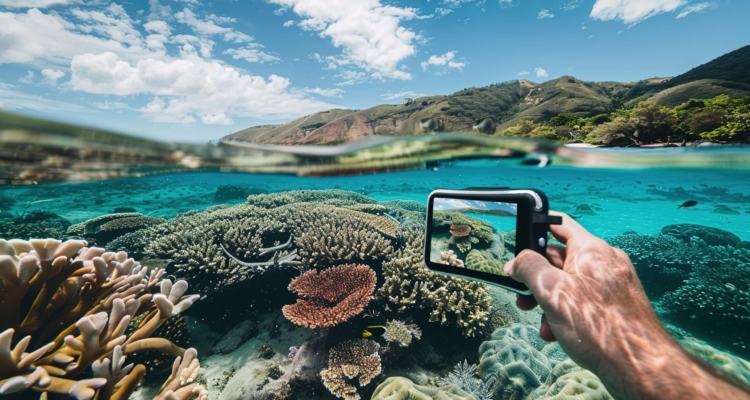
Capturing Ocean Wonders: Techniques for Stunning Photos
A dramatic and movement-filled, spectacular subject to photograph is the ocean, full of light and drama. Capture its wonders requires a technical sense combined with creativity and, to some extent, understanding. This article is intended to explore techniques and methods in photographing ocean wonders from gear selection to exploiting unique properties of light and water, for instance.
Choosing the Right Camera Equipment for Ocean Photography
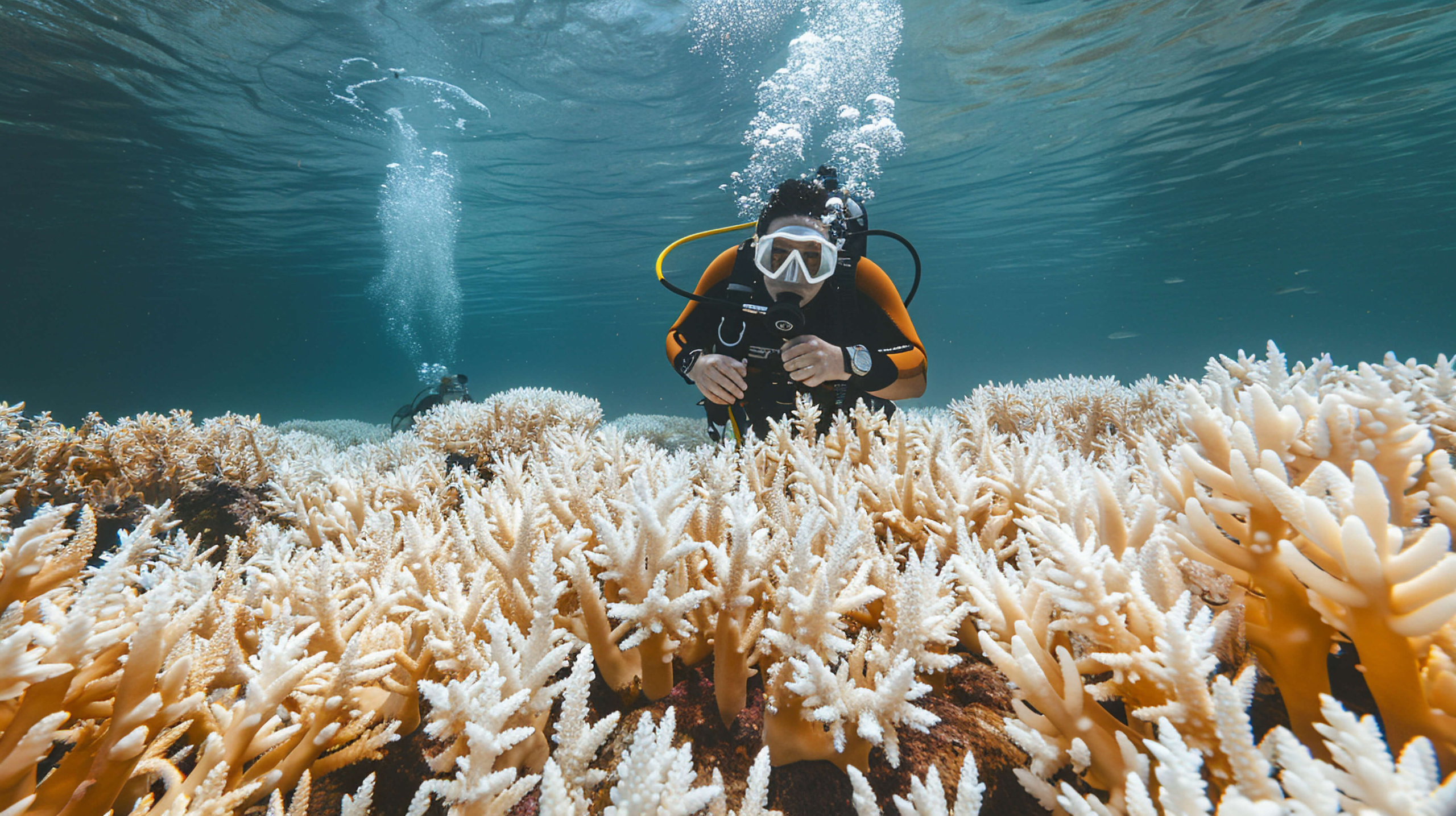
Right equipment is one thing to trap the ocean wonders. First and foremost, you want a camera that can take the elements, an all-weather sealed or waterproof body to avoid salt spray, wind, and water. It’s also essential that the camera should give good performance in low light: as often is with ocean photography, the weather creates conditions for overcast or cloudy shooting scenarios. A wide-angle lens with a focal length between 10-24mm will help you to capture the size of the ocean; with a telephoto lens, you can then freeze dramatic stormy waves.
A good underwater camera housing also comes in handy in the capture of ocean wonders under water. It should be sturdy, light to use, and be provided with an excellent optical viewfinder. A strobe light or an external flash is also very necessary; this is for illuminating the subject and minimizing harsh shadows cast by it. Finally, a gimbal or stabilizer could be integrated to reduce camera shake and blur caused by waves and movements.
Understanding the Ocean as a Subject
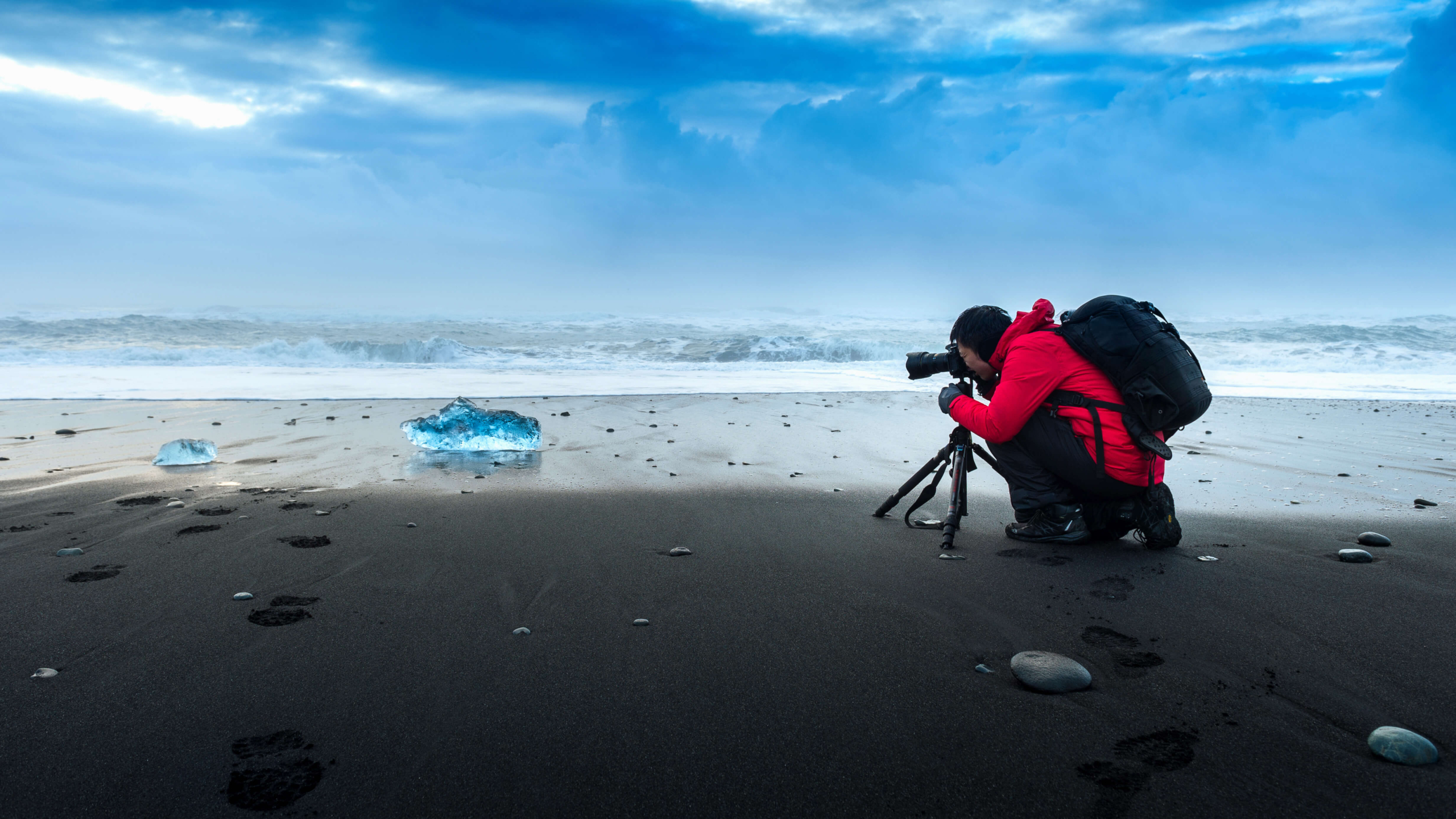
It is dynamic and in a state of constant transformation for the waves, tides, and currents sculpting the scene. Knowing this can help one predict and capture the best moments: during storms; dramatic waves with lightning effects; calm conditions revealing hidden patterns and textures of sand and water. Pay attention to how the light plays off the water, too, as the angle and intensity of the sun can make all the difference in creating the mood and atmosphere you want in your photos.
Consider also the composition of your shot. Look for interesting shapes and forms in the water-think waves, ripples, or patterns of light. For example, you can add the illusion of depth and perspective by using the horizon line, or abstractly compose these pictures by thinking about what you want to show of the textures and colors of the water. Knowing the ocean as a subject will give you potential and predictability in shooting during perfect moments, hence fantastic pictures that take in its beauty and complexity.
4 Professional Ocean Photography Techniques
1. Freeze dramatic stormy waves with telephoto lenses
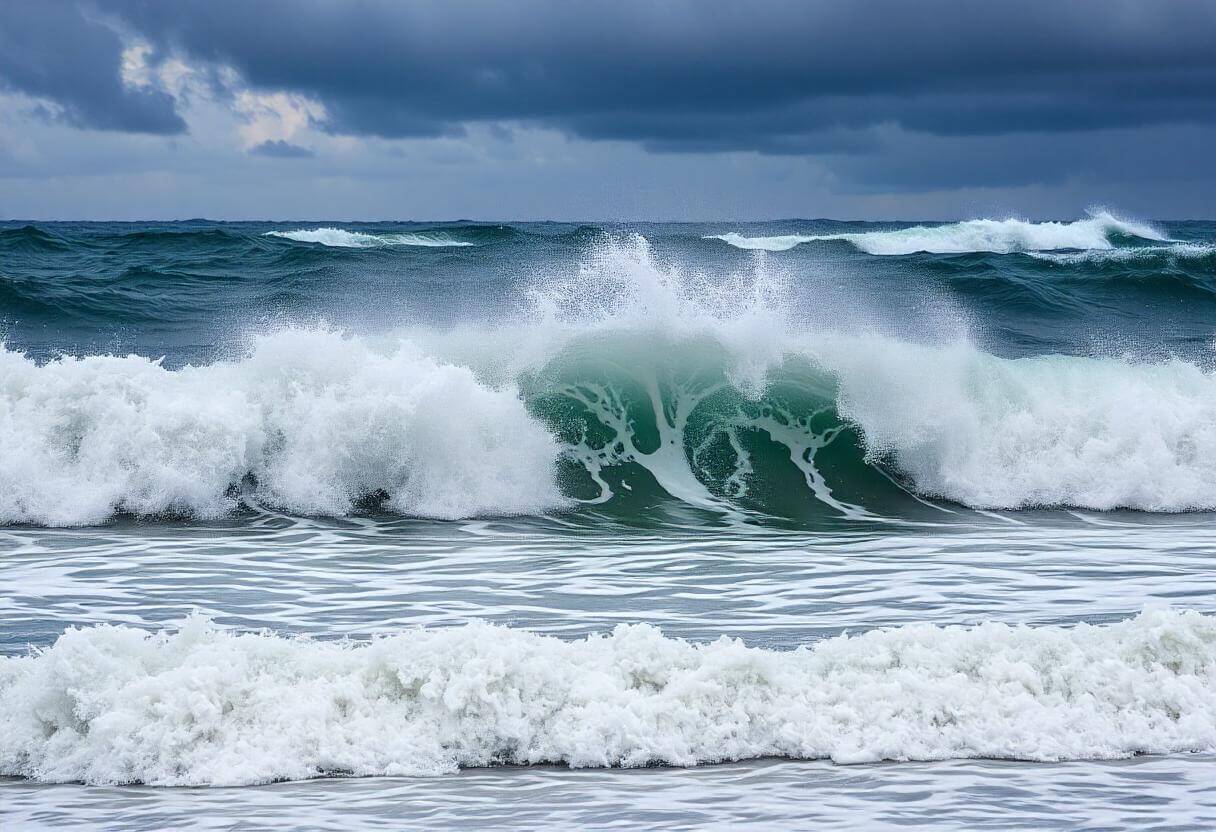
One of the most striking techniques of ocean photography is to use a telephoto lens to freeze the action of dramatic stormy waves. Set up at a safe distance from the surf you can get into the waves zooming in tight with the telephoto lens compressing the scene and getting up close to the turbulent energy. This lens lets you see the waves and the details of the scene from crashing surf to intricate patterns formed by breaking waves in their spray. You can focus on distant scenes at longer focal lengths, and yet capture images of turbulent oceans at very high resolutions.
Experimenting with composition is important in using this method. Seek and capture waves with unique shapes, crests, and movements, which will offer the powers and drama of the ocean. Play with the framing to isolate the most dynamic parts of the wave, thus considering changing angles to enhance the textures and forms. That raw power involved in this method can create that breathtaking image into the natural world, with all its intensities and stormy seas.
2. Try panning to convey movement
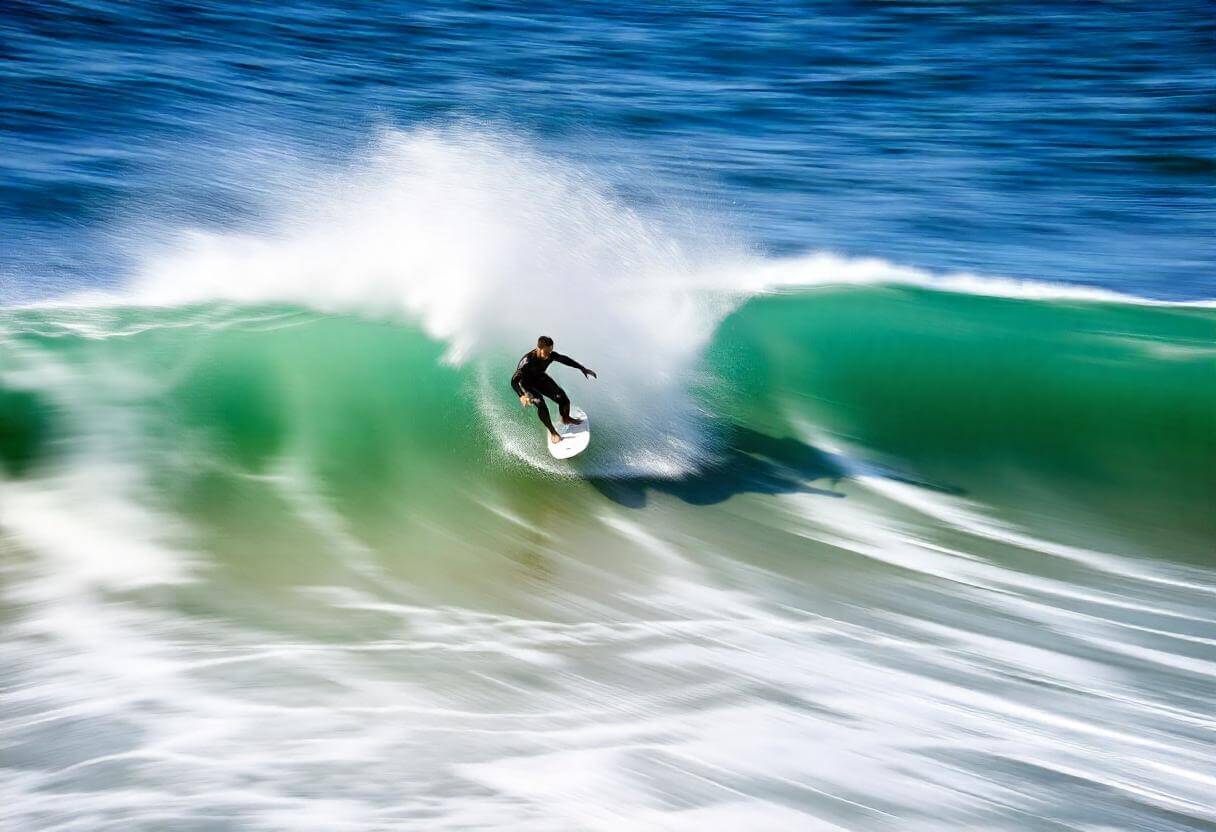
Panning is one of the moving subject techniques because you keep your camera on a subject, for example, waves, surfers, or boats while taking the shot. The whole process gives an impression of momentum and energy in the images created as your camera stays fixed on the subject, while you move along with it simultaneously, with a contrastive effect of having sharpness on the subject and blurriness of background, thus the speed and dynamic movement. It definitely gives a live picture, full of energy, such that one can almost hear the roar of waves or the blowing wind.
A panning shot is successful if you use a slower shutter speed so the background blurs and moving subjects remain sharp. The more you practice holding a smooth movement before the camera, the less it is likely to spoil the effect due to too much camera shake. Experiment with different speeds and angles to find what best represents the movement and conveys the action of the scene. Actually, panning can include dramatic, even exciting elements in your ocean photography, making pictures stand out with a sense of motion.
3. Use light intelligently underwater
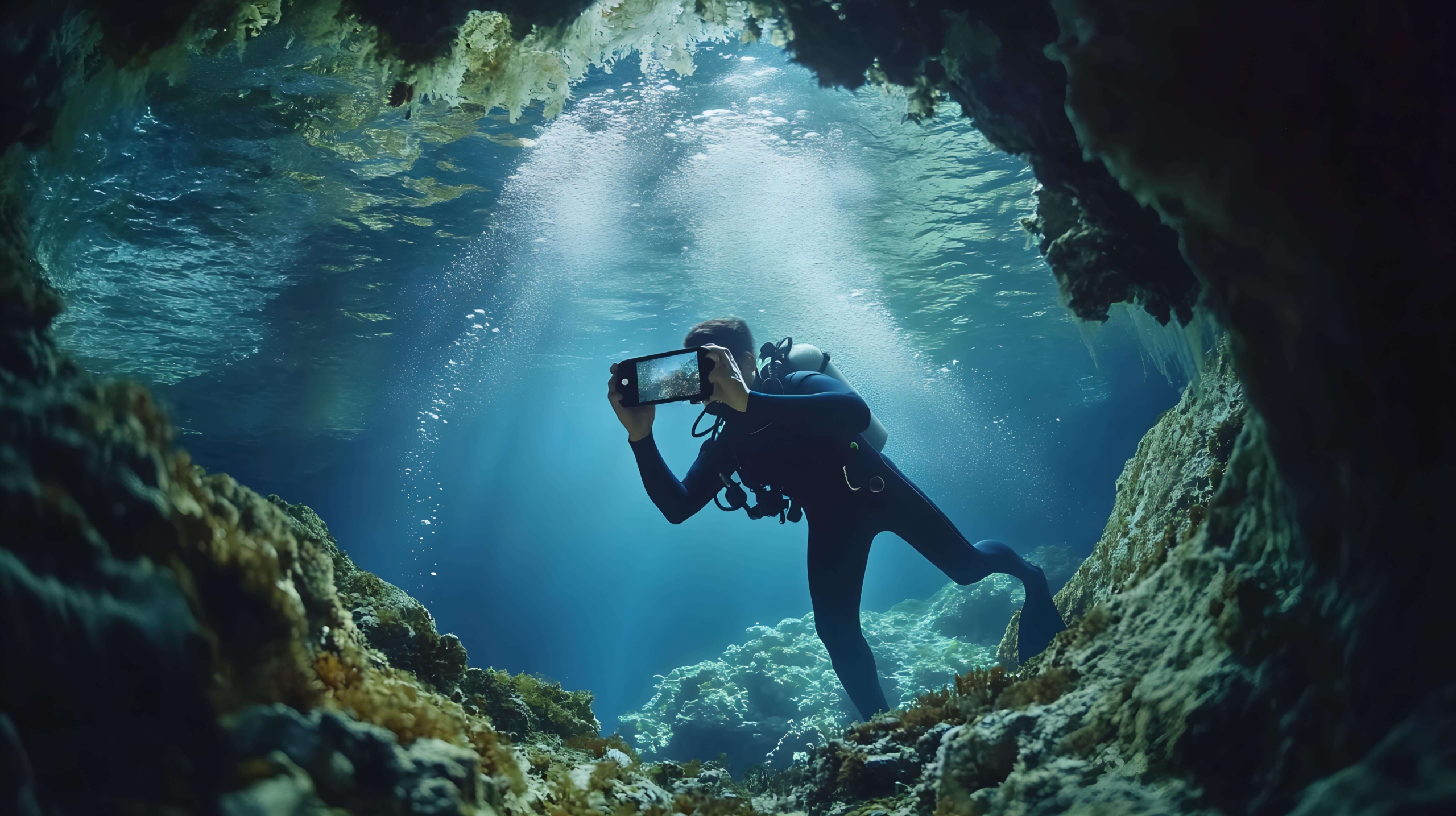
Underwater photography is all about the lighting, for it is in the way that the lighting falls that the mood and depth in your images are created. The light quality and direction also can have a significant impact on the colors and textures of the photographs. Natural lighting is also rapidly reduced in an underwater setting, so bright open areas need to be found where sunlight penetration is at its best. Position yourself to capture the light coming through the water for the illumination of more vivid and detailed underwater shots.
Practice different angles in seeing how light interacts with the water and your subjects. Backlight can really provide beautiful silhouette shots and highlights textures, and sidelight emphasizes contours and details of marine life. Artificial lighting – strobes or flashes can be used to illuminate subjects and remove shadows for even greater depth and clarity in your photos. With a firm grasp of light, an underwater photographer can create truly beautiful, well-lit images of the world beneath.
4. Take on the split-level challenge

The split-level shot takes underwater and above-water scenes in the same frame, so you get a unique composition with visual interaction. It requires shooting from an angle in such a way that the waterline divides the image into two quite different environments. This needs you to be able to put your camera partially submerged or to use specially designed split-level housing. This will allow you to capture the difference between the two different worlds by giving an entire view of the ocean’s wide variety of landscapes.
To be successful in split-level photography, you have to expose your area above and below the waterline. Often, this would mean the fine tuning of your camera settings; at times, it even requires post-processing to ensure that there is exposure and clarity in both areas of your photograph. Pay attention to composition: make sure the two components of an image are interesting and contrasting. This can create stunning, dynamical photographs underlining how the interaction between layers of the ocean environment can be a breathtaking event.
3 Professional Ocean Photography Methods
1. Utilize Incoming Waves

The best ocean photography technique is probably taking photos of when waves are about to break it’s where the frame creates tension and builds anticipation. Look for shapes, like interesting forms, experiment with different composition capturing drama and energy of the scene or even slower shutter speeds to blur the movement adding dynamism and energy to the pictures.
2. Sand Reflections

Another method to use with a smooth, flat sand is creating interesting and deep photographs by taking photographs of sand reflections. The photographer should search for a place that has such a piece of land, then try some different angles and compositions so as to capture the reflections of the sky, water, or ground. Such an impression adds a kind of comfort and serenity to the pictures but contributes to depth and perspective in the captured view.
3. Use Sunburst Effects

Lastly, use sunburst effects. Capture rays of the sun as it transposes across clouds or water. That will give you a bright, radiant effect. Seek out these interesting cloud formations, then experiment with angles and compositions to capture the sunburst effect. Thus, your photographs can have dramatic energy and excitement, connoting movement and energy.
Ocean Photography Safety
- Prioritize Safety: Always place your safety and welfare first while photographing in the ocean or underwater.
- Wear Protective Gear: Use appropriate protective equipment such as a wetsuit or dive gear to stay safe and comfortable.
- Monitor Weather Conditions: Stay aware of weather changes and adverse conditions that could affect your safety.
- Respect Marine Life: Avoid disturbing or removing wildlife and marine debris to protect the ocean environment.
- Be Aware of Your Environment: Stay alert to your surroundings to prevent accidents and injuries.
- Consider Professional Guidance: Hire a guide or professional photographer for valuable advice and assistance with ocean photography challenges.
Conclusion
The science of capturing awe-inspiring wonders from the ocean requires a blend of technical expertise, creativity, and an in-depth understanding of this dynamic subject. With proper equipment, including weather-sealed cameras, wide-angle and telephoto lenses, and underwater housings, all the challenges of ocean photography can be handled effectively. All this the photographer will learn, mastering unique properties of light and water, and freezing dramatic waves with their telephoto lenses, conveying motion with panning shots or using the interplay of light underwater in raising his imagery.
Advanced techniques like split-level photography and methods such as capturing waves in, sand reflections, and sunburst effects will add depth and intrigue to your photography. But safety matters; protective gear is paramount, so is respect for the ocean environment and its inhabitants. Careful planning, practice, and patience can help you master all of this while conducting your craft in a safe and responsible manner.
Read Next: Lenses for Marine Photography: Top 6 Powerful Options



